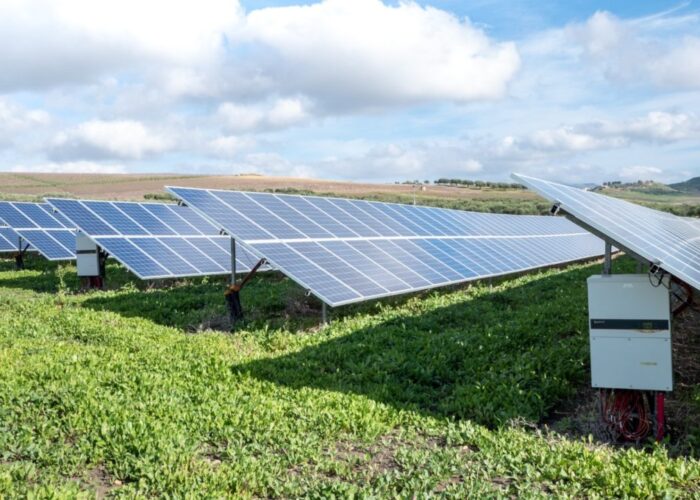The US is emerging as an increasingly major player in the global solar market at unprecedented scale, according to a new report released yesterday.
GTM Research and the Solar Energy Industries Association (SEIA) jointly released US Solar Market Insight: Year-in-Review 2012.
Unlock unlimited access for 12 whole months of distinctive global analysis
Photovoltaics International is now included.
- Regular insight and analysis of the industry’s biggest developments
- In-depth interviews with the industry’s leading figures
- Unlimited digital access to the PV Tech Power journal catalogue
- Unlimited digital access to the Photovoltaics International journal catalogue
- Access to more than 1,000 technical papers
- Discounts on Solar Media’s portfolio of events, in-person and virtual
It found that 3,313MW of PV in 2012, a record for the industry, was installed in 2012, the equivalent of 16m PV panels at rate of two panels installed per second of each work day. That represented a 75% increase in solar growth from 2011.
As of the end of 2012, there were 7,221 MW of PV and 546 MW of concentrating solar power (CSP) online in the US, enough to power 1.2 million homes.
Shayle Khan, vice president at GTM Research, said: “In 2012, the global market slowed down while the US continued to grow impressively. For the first time in recent history US market share of global solar installations jumped to 10%-11%. We're expecting it to continue to grow over the next couple of years we should see 13% or more in 2013.
“The US has always been important, and the US has been a source of innovation from a global standpoint in solar but now the US really is one of the most important solar market in the world. That's a big change.”
Other key findings of the report included the drop in California's dominance from 80% of all national solar installations to around 30%. In 2012, there were 12 states that had installed more than 50MW.
The top 10 largest state solar markets in 2012 were:
1. California 1,033MW 6. Massachusetts 129MW
2. Arizona 710 MW 7. Hawaii 109MW
3. New Jersey 415MW 8. Maryland 74MW
4. Nevada 198MW 9. Texas 64MW
5. North Carolina 132MW 10. New York 60MW
The report also found strong growth in every segment, especially in utility-scale projects despite the slow down in procurement due to many state Renewable Portfolio Standards reaching capacity.
There were 152 utility solar installations in 2012, and eight of the 10 largest projects currently in operation were completed in 2012. These installations represented 54% of total installed capacity, or 1,782 MW.
But that did not spell the end of the large-scale utility project although commercial and residential sector would get more competitive, said Kahn.
“There's a pipeline of projects right now that have PPAs with utilities – it's about 10GW, and 4GW is under construction. That number has been more or less flat for the past year and a half or so. What that means is that while we're building out the pipeline is being replenished.
“It's not as if the market is going down, it's just against a comparative metric which is DG. I also think that we're going through the first wave of procurement that occurred from the big utilities that were early adopters of solar back in 2009.”
However, Rhone Resch, President and Chief Executive of SEIA, said that there was an emerging threat to state renewable portfolio standards (RPS) from fossil fuel lobbyists who see the growth of solar in the US as a threat to their industry.
“There are a lot of challenges to state RPS and we're finding that most of those are coming from conservative think-tanks like Goldwater, the Heartland Institute, these are funded by fossil fuel interests.
“You have a huge funding source from the fossil fuel industry trying to roll these back because we are now starting to gain hold, we are now starting to become a significant part of the new energy generation in these states and they're recognising us as a threat.”
Attacks were being targeted in a number of states, including Colorado, Arizona, Ohio and North Carolina, which has 400MW of capacity to be installed worth $1billion in investments.
Resch also criticised a decision in January by the Arizona Corporation Commission (ACC) to roll back Performance Based Incentives for commercial solar projects.
“You've seen billions of dollars invested in the state of Arizona and all of a sudden the ACC's going to pull the plug on that. It is a poor decision politically and a horrible decision from an economic perspective.”
The California Public Utilities Commission yesterday announced that as of the close of 2012, California is on track to meet its interim requirement of 25% renewables by 2016, and is well-positioned to meet 33% by 2020.
As of the end of last year, the large investor-owned utilities reported that they served 19.8% of their electricity with RPS-eligible generation in 2012. Pacific Gas and Electric Company served 19% of its 2012 retail sales with RPS-eligible renewable energy, Southern California Edison with 20.6%, and San Diego Gas & Electric with 20.3%.







